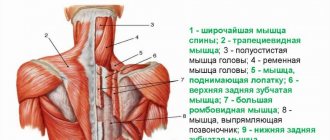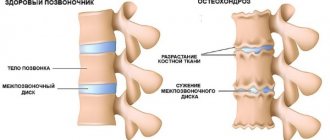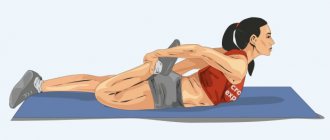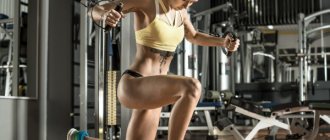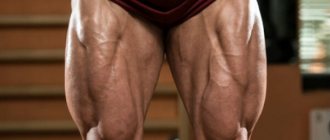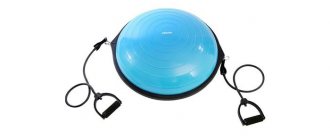06/08/2021 | Category Osteochondrosis
There are different organs in the body - heart, liver, lungs, spleen, intestines, brain, etc. The muscular organ is the “king” for all the others. And all because most of the body consists of it. Some muscles contract consciously, some unconsciously, such as the heart. The muscular organ has its center, which is located in the spine. And when a person has pain in the very core of this organ, which is called the deep muscles of the spine, for some reason he often treats this quite calmly and does not take any action. If the heart hurts, a person begins to actively treat it and does not wait until a heart attack occurs. The same goes for headaches and liver discomfort.
Chronic pain in the back and sides is a very important and serious symptom that many people neglect. After all, a person cannot live without a muscular organ. He will not be able to move, eat, or breathe. Without it, it will be impossible to perform the simplest functions. It is as vital an organ as the brain. If you have back pain in the spine area, you don’t need to endure it. It is necessary to start treating it, and not suppress yourself with non-steroidal, anti-inflammatory drugs.
Causes of back pain
Back pain is usually caused by spasms that occur due to dysfunction of the extrinsic muscles. For example, leg muscles have weakened due to physical inactivity. Then the lower back weakens, and subsequent problems begin to develop. Back pain can occur for the following reasons:
- inflammatory processes in tissues near the spinal column;
- spinal injuries;
- pinching of the nerve roots between the vertebrae;
- excess lactic acid in the muscles, which occurs with frequent, heavy loads on the body.
Sometimes the causes of back pain can be due to unhealthy lifestyle factors:
- sedentary work, physical inactivity;
- lack of sports activities;
- frequent overeating and, as a result, high body weight;
- excessive physical activity, which puts a lot of stress on the joints and spine.
It is important to remember that back pain is not a disease, but a symptom of one of the diseases. If you feel discomfort in your back, your arms go numb, your cartilage crunches when you move, then you need to conduct a diagnosis and identify the true cause of these symptoms. It is advisable to do this as soon as possible, since the success of treatment is influenced by how quickly you see a doctor and begin to perform therapeutic actions.
How to strengthen your back muscles
Exercise is an important part of strengthening, improving and maintaining normal back function. Regular exercise plays an important role in preventing back injuries and pain, and it has a beneficial effect not only on your back health, but also on your overall fitness level.
An example of a high-quality program would be the following training complex from Dmitry Yashankin:
Next, we will consider strengthening exercises in more detail, which will be useful both at home for independent training, and as a complement to the main program.
Please note: The exercises below are suggested for those who are not currently experiencing back pain. If you are worried about pain during physical activity, you need to adjust this complex according to your doctor’s recommendations, but under no circumstances should you continue exercising through pain.
Exercises to strengthen the back can be divided into the following three groups:
- Strength: repeated muscle contractions to the point of fatigue
- Stretching: slow static muscle stretching
- Aerobic: exercises that involve large muscle groups
All exercises should be performed slowly, without discomfort, to avoid injury. When doing strength exercises and stretching, remember to breathe in a natural manner: inhale at the moment of tension and peak load, exhale when relaxing.
Diagnostics
If you feel pain from your back, you shouldn’t endure it and wait for it to go away on its own. You need to see a doctor who will examine you and conduct a diagnosis. It includes listening to the patient’s complaints, examination by a neurologist, orthopedist and traumatologist. After all this, you may be prescribed blood and urine tests. In some cases, it is recommended to take an X-ray if you have previously suffered a back injury. Diagnostics are carried out using modern devices - ultrasound examination, magnetic resonance imaging, computed tomography. Diagnosis is recommended even after you have completed a course of treatment. This should be done for prevention purposes.
What happens if back pain is left untreated?
Back pain, which has developed into chronic pain, begins to affect the condition of the entire body. If you tolerate it and do nothing, the blood flow to the brain is disrupted, because the vertebral artery, which supplies the brain, passes through the neck. After all, pain will sooner or later produce a spasm that disrupts the nutrition of cartilage and intervertebral discs. You will end up with brain problems.
What happens next? The nerves in the cervical region, from which the arms extend, are pinched. Pain and numbness begins in the hands. The nerves that regulate the activity of the diaphragm are also pinched - breathing function is impaired.
A nerve plexus is formed in the thoracic region, which regulates cardiovascular activity. When the nerve in this area is pinched, interruptions in the functioning of the heart begin. Intestinal functions are disrupted, chronic diseases of the gastrointestinal tract and liver occur. The kidneys, bladder, and gonads of the pelvic organs begin to work poorly. Sexual dysfunction occurs. Unfortunately, many go to treat these very problems, not even suspecting that the root cause is a sore back. The result is a vicious circle, and the person does not know what to do. Just remember that a healthy back is key to your overall well-being. And many diseases are associated precisely with dysfunction of the vertebrae, muscle tension and nerve endings.
Back muscles and spine: a little anatomy
The spine is made up of 24 moving bones, the vertebrae, between which are cushion-like structures called discs that absorb shock.
The vertebrae and discs are supported by ligaments and muscles that keep the back straight in three balanced curves. When one of the components begins to hurt or gets injured, back pain and problems will almost certainly follow.
A healthy back is a balanced state of the muscles of the back and spine, when the cervical, thoracic and lumbar curves are aligned correctly (a state when the ears, shoulders and hips lie on the same line). Back health also depends on the flexibility and elasticity of the discs and good muscle condition, which can only be achieved by working on strengthening.
Treatment for back pain
There is no need to suppress pain with pills. They can only alleviate the condition for a while, but will not cure the essence itself. Constant use of the drug will negatively affect the condition of internal organs, cause a number of side effects, and then you will have to treat a whole bunch of other diseases. Dr. Shishonin believes that back pain should be treated without medications. After a correctly established diagnosis, certain treatment methods are prescribed:
Treatment for early back pain is quite simple. It covers conservative therapy methods: gymnastics, exercise equipment, massage, etc. In the process of performing exercises, the superficial and deep muscles of the back are strengthened, and the body's endurance to various loads increases. In order not to bring the body to a critical state, when without surgery a person faces disability, it is necessary to react to minimal symptoms and immediately take care of your health.
Physiotherapy
In order for the back muscles to always be in good shape, not to relax, not to stagnate, you need to devote a little time to them every day. To do this, it is recommended to perform therapeutic exercises, which will strengthen the muscles, remove excess stress from them, relax and eliminate spasms.
After all, pain in the spine deprives you of joy, depresses you, immobilizes you. A person cannot perform his work to his full potential and is constantly distracted by unpleasant sensations. About 1/3 of the entire population of the planet suffers from back pain. Unfortunately, this figure only increases every year. But if you do the right exercises every day, even a sedentary lifestyle will not harm your health.
There are three effective and simple exercises that you can do at home. They take a minimum of time, but the benefits from them are enormous.
Child's pose
You need to kneel down, then bend your legs and lower your pelvis, sitting on your heels. Afterwards, you need to spread your knees and bend towards the floor, stretching your whole body. The head should be lowered and the arms should be stretched forward with a slight stretch. Never bend your arms, they should be straight. The pelvis should be pressed against the heels. At the same time, the back becomes rounded, the neck vertebrae also arch.
You need to stay in this position for 30 seconds, after which you slowly and carefully return to the original position. If pain is felt in the back area, the exercise should be stopped.
The exercise is used to relieve tension in the back muscles, completely relax it, stretch the vertebrae and remove tension. At the same time, the pressure on the intervertebral discs weakens. As a result, the painful sensations recede.
"Kitty"
To perform this exercise, you will need to get on all fours. At the moment of exhalation, stretch your shoulder blades upward and thereby round your back. The chest should be pulled in and the head should be lowered. You need to be in this position for 10 seconds. As you inhale, you need to bend your back and slowly raise your head, open your chest. Stay in this position for 10 seconds as well. Next you need to return to the original position. And if you do not feel any discomfort in the back area, you feel comfortable doing the exercise, do it up to 15 times. This will give you the opportunity not only to strengthen your back muscles, but also to stretch them well, relax them, and eliminate pain.
Forward bends
To perform the bends, you need to place your feet shoulder-width apart. Maybe even a little wider. The back should be straight and the neck tilted down. As you exhale, you need to bend forward with a straight back. The legs remain straight. You can lean on your shins with both hands. You need to remain in the bent position for up to 5 seconds, after which you slowly straighten your back. The exercise should be repeated 5-6 times, but it is important that you do not feel any back pain.
To develop your back muscles, you must combine several stretching and strengthening exercises. If you feel quite severe pain in your back, it is necessary to reduce the load in order to carry out physical therapy in a gentle manner. It is also important not to make sudden movements, so as not to harm yourself or provoke additional problems. It is important to remember that back pain can be a symptom of dangerous diseases, so in addition to exercises, you need to engage in comprehensive treatment of the spine. It is recommended to consult a doctor for diagnosis.
Exercise equipment
To strengthen your back muscles and develop spinal flexibility, you need to perform exercises on specialized machines. This will allow you to tone your muscles, get rid of tension and eliminate pain. The most effective exercise machine for the back is an inversion table.
Hyperextension is a small exercise that allows you to stretch and strengthen your back muscles, as well as your legs, abs, and buttocks. It is made in the form of a frame with a comfortable pillow for the pelvis and soft bolsters so that you can fix your legs. Such simulators are available both inclined and horizontal. They are used in gyms and at home.
An inversion table is a simulator that allows you to “unload” the spine, relieve pain and generally strengthen muscles and improve well-being. Ideal for people who have to frequently lift, carry heavy objects at work, or sit a lot. Inversion therapy allows you to return the spine to its shape, gently stretches the intervertebral discs to eliminate pinching, relieve tension and spasms. As a result, the pain goes away, blood circulation improves, and the brain begins to receive enough nutrition. A person even begins to look better outwardly: his posture becomes correct. An inversion table can be used to prevent back pain in the initial stages, as well as intervertebral hernia, varicose veins, and joint diseases. If you have high blood pressure, glaucoma, or heart disease, exercise is contraindicated.
Massage
Therapeutic massage effectively helps relieve pain by relaxing muscle spasms. There are the following types of back massages:
- Classical. It is considered the most common. When a specialist performs such a massage, he works different muscle groups to eliminate tension.
- Hardware. Gives you the opportunity to relax, relieve pain and spasms.
- Hydromassage. The muscles are exposed to water jets of varying strength. This massage relaxes, relieves fatigue, and reduces pain.
- Spot. Allows you to influence individual points of the body and thereby eliminate back pain.
- Sports. Allows you to warm up your muscles before physical exercise, allowing them to relax so that during training there is no risk of getting a sprain or injury.
- Vacuum. During the massage, special cups are used, with the help of which blood circulation is activated and lymphatic drainage is improved.
Massage alone will not cure your back. It is one of the elements of complex therapy, which is used in the initial stages of the disease. If you apply all conservative methods - do exercises, work out on exercise machines, go for a massage, lead an active lifestyle, then you can soon forget forever about pain in the spine.
Strength exercises for strong back muscles
Strength training is the best answer to the question “how to quickly strengthen your back muscles.” Such exercises help increase tone, strengthen the back muscles and improve muscle condition.
Developed abdominal and back muscles help stabilize the spine, making it easier to maintain posture and correctly perform movements that involve the back. Strong hips and leg muscles are also important for proper lifting technique and body mechanics.
You can easily strengthen your back muscles at home with the following exercises.
Upper press crunches
Lie with your back on the floor, place your arms along your body, bend your knees, press your pelvis so that there is no arch in your back or it is minimal. Raise your shoulders and head so that your shoulder blades lift off the floor. Hold for 5-10 seconds, repeat 10 times.
Twisting (crunches)
Oblique crunches
Like all abdominal exercises, oblique crunches are also great for strengthening your back. Lie with your back on the floor, raise your head and move your shoulders towards the opposite hip, stretch your arms forward. Hold for 5 seconds. Repeat 10 times, then do the same number of times in the other direction.
Oblique crunches on a bench
Superman - body and leg lift
One of the best exercises for the back muscles without using weights. Lie face down, arms along your body. Tighten your buttocks and lift your head and shoulders as high off the floor as possible so that you feel like Superman above the floor. Hold for 5-10 seconds, repeat 10 times.
Exercise "Superman"
Various arm and leg raises
The technique is similar to the previous exercise. It involves opposite pairs of arms and legs.
Lie face down on the floor, place a rolled towel under your forehead, and stretch your arms above your head. Place a pillow under your pelvis and stomach. Keeping your right knee straight, lift your leg 3-5 cm from the floor and at the same time lift your left arm off the floor. Hold for 5 seconds. Do it with the other leg and arm. Repeat 10 times for each side.
This exercise can also be performed on a fitball (gymnastic ball) or from a standing position on all fours for greater activation of the stabilizer muscles.
Physical therapy exercises, physical therapy
If unpleasant pain symptoms appear, it is recommended to expand the complex through exercise therapy. Therapeutic exercises have long been considered an effective way to combat the symptoms of a spinal hernia at any stage of its manifestation.
Surgical intervention is used very rarely; the main approach in medical practice for treating and restoring the back is gymnastic exercises:
- Exercises for the spine and pain relief using the Bubnovsky method
- Sets of exercises for back and lower back pain

